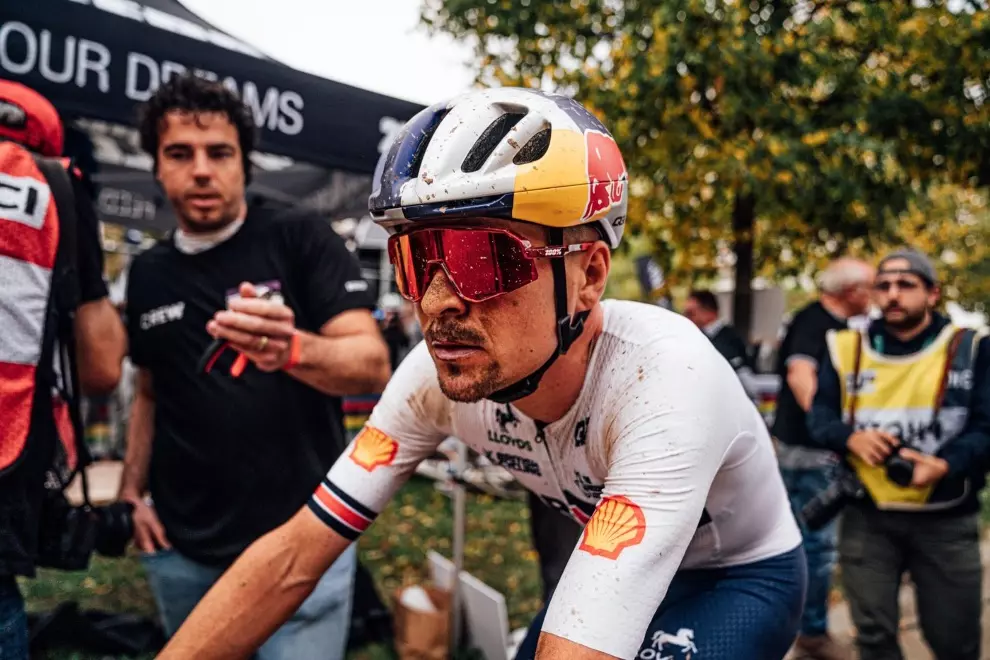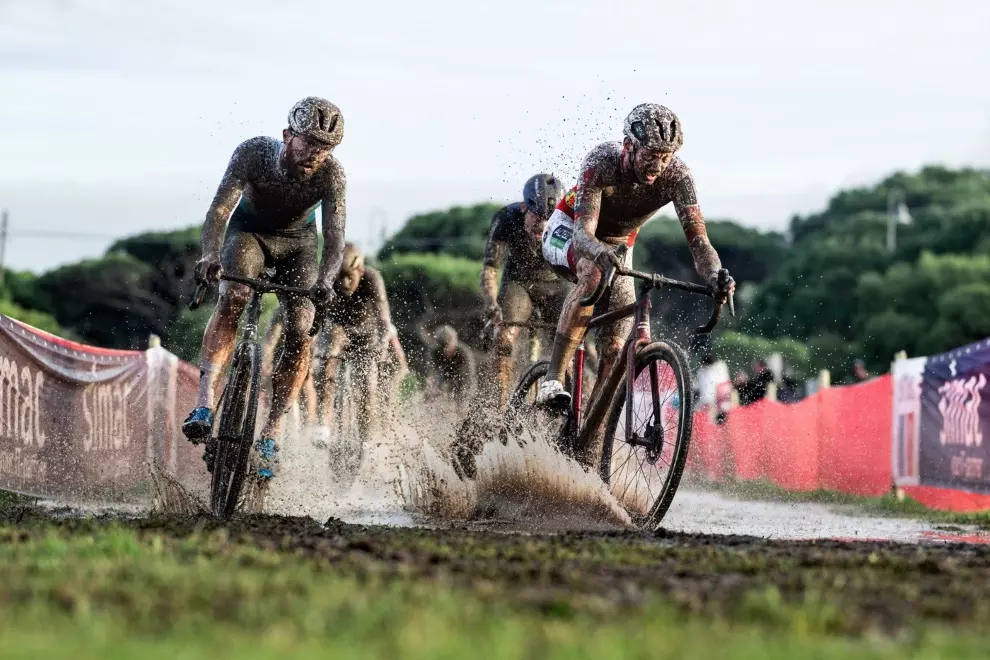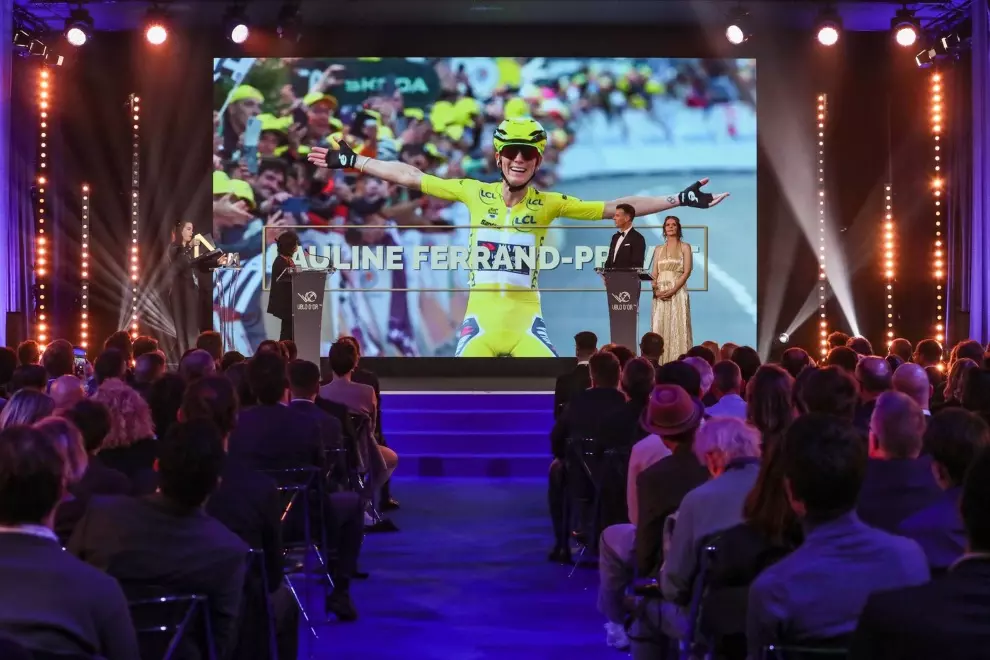Tadej Pogačar’s team came into the race with Ayuso as its leader and veteran Adam Yates as a backup if the young Spaniard faltered. But Ayuso and Roglič were among the riders who hit the deck on the second gravel sector of the stage. By the time they got back on their bikes, they trailed a six-rider lead group that included Ayuso’s 21-year-old teammate Isaac del Toro by about a minute.
Ayuso finished the stage 1:07 behind his teammate (who was beaten to the finish line by van Aert), while Roglič also had a puncture and lost even more time. The upshot was that del Toro ended in the race leader’s maglia rosa (pink jersey), leading his “leader” by 1:07, with Roglič down in tenth place at 2:25. Yates trailed del Toro by 2:01 and was likely no longer in the running to lead the team, if he ever truly was.
The problem for UAE Team Emirates is that Ayuso’s time trialling ability and his climbing skills are well established, whereas del Toro’s are not. On the other hand, the young Mexicans’ lead over Roglič, their primary rival, was twice that of Ayuso’s advantage over the Slovenian. What to do?
On Monday, Ayuso played up the needs of the team, saying, “It doesn’t matter if I win or if Isaac wins, the most important thing is that we win the Giro. We’re not going to lose the race by fighting each other.”
While del Toro had expressed a similar attitude on Sunday, his feelings on Monday were more ambiguous: “I’m just glad that working so hard has had this result, but I never wanted to be the first. I’m just glad it worked out that way,” he said. “My strategy from now on is to maintain the pink jersey in the team and try to take the overall, and for sure to maintain the lead inside the team.”
Uhm, what?
If that confused you too, here is what UAE manager Joxean Fernández Matxín had to say: “The strategy of our leaders hasn’t changed. We’re all here together to win the Giro. We will work for those best positioned when the decisive moments come.”
Oh, I see.
Tuesday’s 28.6 km ITT from Lucca to Pisa was therefore more than just another Giro stage for UAE; it was a kind of internal contest for team leadership. If del Toro finished close to Ayuso while keeping his expected time loss to Roglič within reason, he would probably remain the team’s leader and Ayuso and Yates would support him.
In any case, rain became a player in the race, as an intermittent downpour along the route affected the last 15 riders, including del Toro, Ayuso and Roglič. Del Toro, who lacked experience in time trials and in the rain, began his ride very cautiously on the wet pavement and was soon 40 seconds behind Ayuso, but he grew more confident as her rode on and limited his loss to his teammate to 47 seconds, thereby keeping the GC leadership, but by only 25 seconds. A result that clarified matters for the UAE, but didn’t resolve them. It was a good race for Roglič, however, who now sits in fifth, only 1:18 behind the race leader and less than a minute behind Ayuso. Game on.

Having two riders at the top of the GC standings (and two more in the top 10) is an embarrassment of riches for UAE Team Emirates–XRG that could lead to a general embarrassment if they make the wrong decision and lose the race. On the other hand, Red Bull–BORA–hansgrohe doesn’t have a choice; it has put all its eggs into Roglič’s basket. Which brings up an interesting question: why don’t more teams go into stage races with two potential leaders and let the results dictate who the team will work for?
When Pogačar is at the start of a race, that question doesn’t arise because he is the best rider in the world. But he usually has the excellent João Almeida riding in support, who could take his place if he became incapacitated. The Portuguese will be supporting Pogačar in the Tour again this year and presumably ride the Vuelta as the team leader. It’s always good to be wealthy, whether in cash or in strong Grand Tour riders.
Visma–Lease a Bike (then called Jumbo-Visma) actually had two possible leaders in the 2022 and 2023 Tours de France, Roglič and Jonas Vingegaard. Yes, the Dane was the chosen leader, but if he had faltered or crashed out, the Slovenian could have taken over the GC chase. That Roglič never did and that he eventually understood that he never would was undoubtedly the main, if not only, reason he left the team for Red Bull–BORA–hansgrohe.
Visma used an interesting tactic in those races to defeat Pogačar. They sent Roglič and Vingegaard on alternating breakaways up some climbs, which forced Pogačar, who was riding alone, to follow each attack. The American term for this strategy is whipsaw, which is used in poker when two players raise and re-raise with one player in between who must call the raises in order to stay in the game. It also means “to defeat or best in two ways at once.”
The “player in between” in this Giro is Roglič, who will have to follow both del Toro and Ayuso if they ride away on a climb, especially as the Slovenian’s best mountain domestique, former Giro winner Jai Hindley, crashed out on stage 1. This is one important advantage a team with two leaders can have in a stage race.
It’s also a solution to the risk of losing a team leader in a one-day race. In the 2024 Dwars door Vlaanderen, after Wout van Aert crashed out, Matteo Jorgenson took over and won the race. With racing growing more dangerous as races get faster and more competitive, the possibility of riding two potential leaders in a Grand Tour or Classic, even if your team has a rider named Pogačar, Evenepoel, Roglič or van der Poel, might be a smart strategy. Just because you never know.
For UAE Team Emirates–XRG, the question of Giro leadership also has implications for the future. With Pogačar apparently set to retire at 30, when his contract expires, the team will need to have someone with his charismatic appeal and talent to replace him. Ayuso is 22, del Toro is 21, and each probably wants to become “the next Pogačar.” Who wouldn’t?
This embarrassment of riches has one possible drawback. I can see one of the two leaving the UAE for another team if he sees that he is falling behind his rival in the eyes of the team’s management, as Roglič did when Vingegaard was preferred over him in the Tour. Based on their performances so far, teams would be lining up to shower them with money. But Ayuso’s contract runs out at the end of 2028, while UAE has sewn up del Toro until 2029. Things can change, of course, and in cycling, they often do. But I expect the next three years to be very interesting for UAE Team Emirates and for their budding young superstars.




